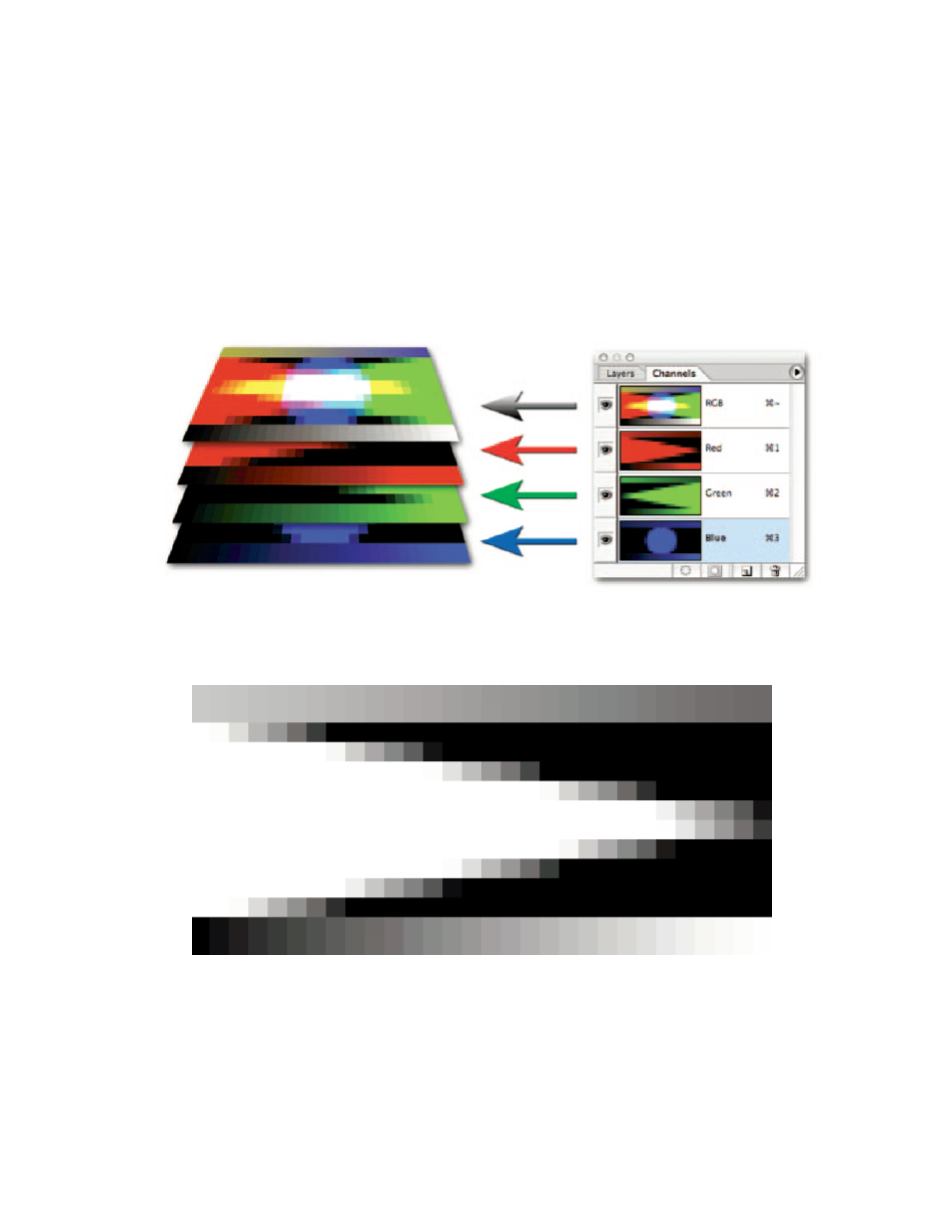

18
essential skills: photoshop CS3
Levels
We have seen how mixing primary colors of light can create the secondary colors. In the
previous illustration, where three colored circles were overlapped, the color in each of the three
channels is either ‘on’ or ‘off’. In this way six colors are created from three RGB channels. The
three channels can, however, house a greater range of information about color than simply ‘yes’
(fully on) or ‘no’ (fully off) in any one pixel location. Capture devices are capable of measuring
‘
how much
’ color is present in any one given location. In a standard RGB image, 256 different
levels of color can be assigned to each pixel location. The channels operate very much like a
mixing desk, mixing varying amounts of color from each of the three color channels to create
the full color spectrum.
If the three channels are mixed in equal proportions what we see is a series of tonal steps from
black (0 in all three channels) to white (255 in all channels).
256 separate tones are sufficient to create a smooth transition from dark to light with no visible
steps. If the pixels are sufficiently small when printed out, the viewer of the image cannot
see either the individual pixels or the steps in tone, and the illusion of ‘
continuous tone
’ or
‘
photographic quality
’ is achieved.
256 levels of tone are reduced to 30 so the steps can be clearly seen
















